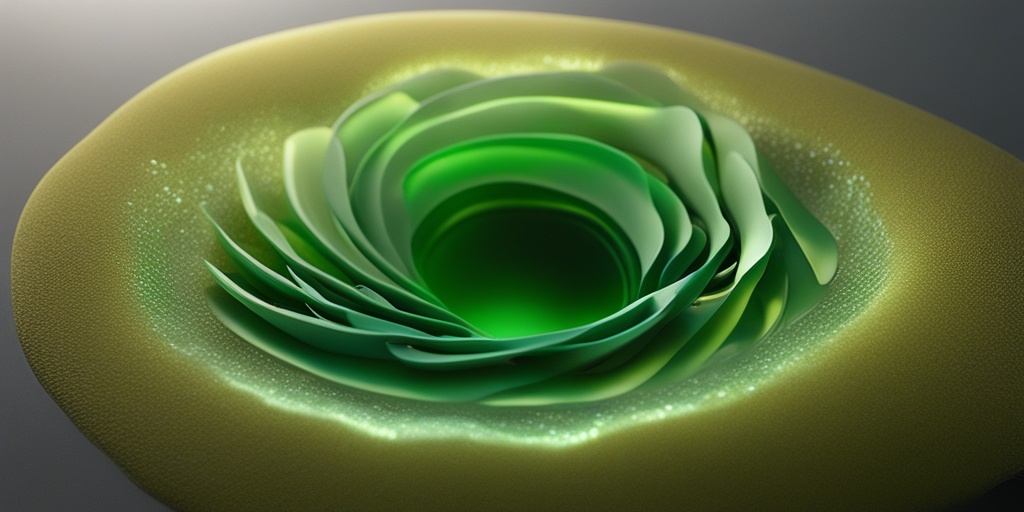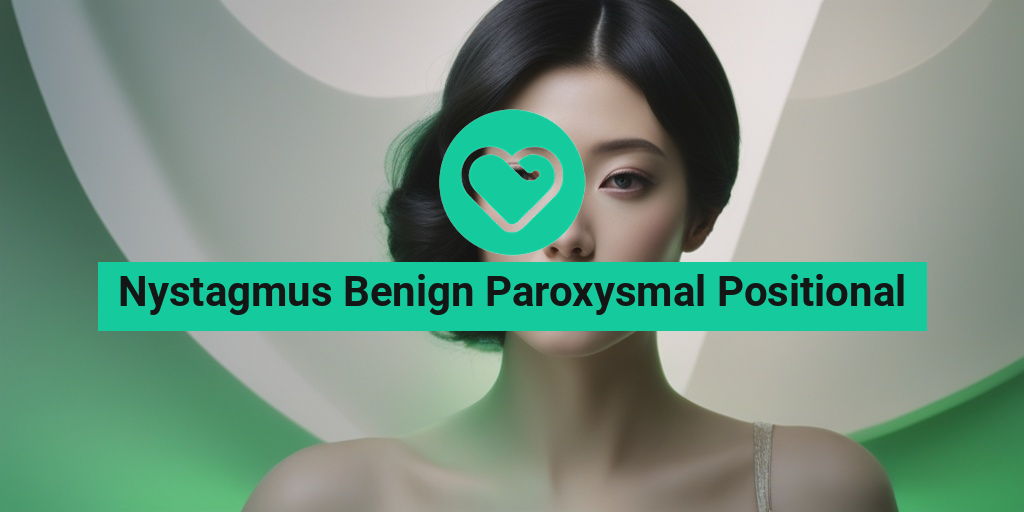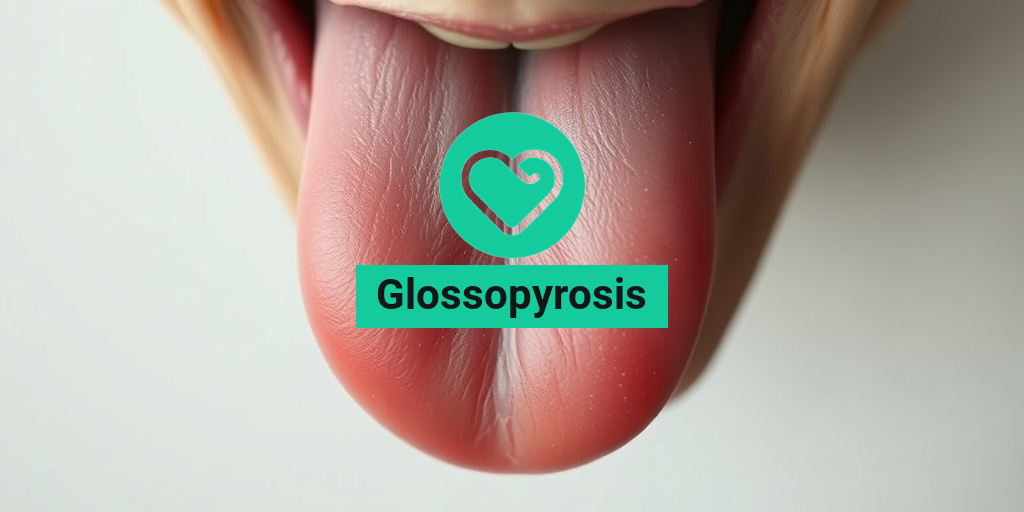What Is Nystagmus Benign Paroxysmal Positional?
Nystagmus Benign Paroxysmal Positional (BPPN) is a type of vertigo that affects millions of people worldwide. But what exactly is it, and how does it differ from other types of vertigo?
Defining Nystagmus Benign Paroxysmal Positional
BPPN is a type of peripheral vertigo, which means it originates from the inner ear or the vestibular nerve. It’s characterized by brief, intense episodes of vertigo that are triggered by specific head movements or changes in position.
During these episodes, people may experience a range of symptoms, including:
- Dizziness or spinning sensations
- Nausea and vomiting
- Loss of balance or unsteadiness
- Blurred vision or difficulty focusing
- Hearing loss or tinnitus (ringing in the ears)
These symptoms can be quite debilitating, making it difficult for people to perform daily activities or even maintain their independence.
What Causes Nystagmus Benign Paroxysmal Positional?
The exact cause of BPPN is still not fully understood, but research suggests that it may be related to:
- Calcium particles in the inner ear canal
- Damage to the vestibular nerve or inner ear structures
- Age-related changes in the inner ear
- Head or neck injuries
- Inner ear infections or inflammation
While the exact cause may vary, the good news is that BPPN is generally a benign condition, meaning it’s not life-threatening and can be managed with the right treatment.
Understanding Benign Paroxysmal Positional Vertigo
Benign Paroxysmal Positional Vertigo (BPPV) is a related condition that’s often confused with BPPN. So, what’s the difference?
BPPV vs. BPPN: What’s the Difference?
BPPV is a type of vertigo that’s triggered by specific head movements, such as rolling over in bed, getting out of bed, or looking up or down. It’s characterized by brief, intense episodes of vertigo that usually last less than a minute.
BPPN, on the other hand, is a type of nystagmus (abnormal eye movements) that’s triggered by changes in position or head movements. While both conditions share some similarities, BPPN is generally more severe and can cause more prolonged episodes of vertigo.
So, how can you tell if you have BPPN or BPPV? It’s essential to consult with a healthcare professional for an accurate diagnosis and treatment plan.
At Yesil Health AI (yesilhealth.com), we understand the importance of evidence-based health answers. Our AI-powered platform provides personalized health insights and resources to help you navigate complex health topics like BPPN and BPPV.
Remember, if you’re experiencing symptoms of BPPN or BPPV, don’t hesitate to seek medical attention. With the right treatment and support, you can manage your symptoms and regain control over your life 🙌.

Nystagmus Benign Paroxysmal Positional Symptoms
If you’re experiencing sudden, brief episodes of vertigo, nausea, and imbalance, you might be wondering what’s going on with your body. These symptoms can be unsettling, to say the least. But don’t worry, we’re here to help you understand what might be causing them. In this article, we’ll dive into the symptoms of Nystagmus Benign Paroxysmal Positional (BPPN) and explore its causes.
What are the symptoms of Nystagmus Benign Paroxysmal Positional?
BPPN symptoms can vary from person to person, but they often include:
- Dizziness or vertigo: You might feel like the room is spinning or that you’re going to fall.
- Nausea and vomiting: The dizziness can be so intense that it triggers nausea and vomiting.
- : You might stumble or stagger when standing or walking.
- Rapid eye movements: Your eyes might move rapidly from side to side, a condition known as nystagmus.
- Hearing changes: Some people experience hearing changes, such as ringing in the ears or sensitivity to sound.
These symptoms usually occur when you change positions, such as:
- Rolling over in bed
- Sitting up from a lying down position
- Looking up or down
- Turning your head quickly
The good news is that BPPN symptoms are usually brief, lasting only a few seconds to a minute. However, they can be quite intense and disrupt your daily life.
Causes of Nystagmus Benign Paroxysmal Positional
So, what causes BPPN? While the exact cause is still not fully understood, research suggests that it’s related to the following factors:
Inner ear problems
The inner ear contains tiny calcium particles called otoliths that help us maintain our balance. In people with BPPN, these particles can become dislodged and move into the canals of the inner ear, triggering vertigo and other symptoms.
Head or neck injuries
A head or neck injury can cause the inner ear to become damaged, leading to BPPN symptoms.
Viral infections
Some viral infections, such as labyrinthitis or vestibular neuritis, can cause inflammation in the inner ear and lead to BPPN.
Age-related changes
As we age, our inner ear can undergo natural changes that increase the risk of developing BPPN.
While these factors can contribute to BPPN, it’s essential to consult a healthcare professional for an accurate diagnosis and treatment plan. In the next section, we’ll explore how BPPN is diagnosed and treated. 🏥

Risk Factors for Developing Nystagmus Benign Paroxysmal Positional
Nystagmus Benign Paroxysmal Positional (BPPN) is a common vestibular disorder that affects millions of people worldwide. While it can occur in anyone, certain individuals are more prone to developing this condition. In this section, we’ll explore the risk factors that increase your likelihood of experiencing BPPN.
Age: A Significant Risk Factor
Age is a significant risk factor for BPPN. The condition typically affects people between the ages of 50 and 70, with the majority of cases reported in individuals over 60. As we age, our inner ear structures undergo natural degenerative changes, making us more susceptible to BPPN.
Head or Neck Trauma
Experiencing a head or neck injury can increase your risk of developing BPPN. This is because trauma can dislodge the small calcium particles in the inner ear, leading to the characteristic symptoms of BPPN. If you’ve had a recent head or neck injury, it’s essential to consult with your doctor to rule out any underlying conditions.
Ear Infections and Disorders
Certain ear infections and disorders, such as labyrinthitis, vestibular neuritis, and Meniere’s disease, can increase your risk of developing BPPN. These conditions can cause inflammation and damage to the inner ear structures, leading to the characteristic symptoms of BPPN.
Family History
Research suggests that BPPN may have a genetic component. If you have a family history of BPPN or other vestibular disorders, you may be more likely to develop the condition. While the exact genetic mechanisms are not fully understood, it’s essential to discuss your family medical history with your doctor.
Other Medical Conditions
Certain medical conditions, such as osteoporosis, diabetes, and migraines, can increase your risk of developing BPPN. These conditions can affect the inner ear structures and increase the likelihood of experiencing BPPN symptoms.
Diagnosing Nystagmus Benign Paroxysmal Positional
Diagnosing Nystagmus Benign Paroxysmal Positional (BPPN) typically involves a combination of physical examinations, medical history, and diagnostic tests. In this section, we’ll explore the steps involved in diagnosing BPPN.
Physical Examination
A thorough physical examination is essential for diagnosing BPPN. Your doctor will typically perform a series of tests to assess your balance, coordination, and eye movements. These tests may include:
- Dix-Hallpike maneuver: This test involves rapidly moving your head from side to side while lying down to assess your eye movements and balance.
- Roll test: This test involves rolling your head from side to side while sitting up to assess your eye movements and balance.
- Videonystagmography (VNG): This test uses small cameras to record your eye movements while you’re performing various head movements.
Medical History
Your doctor will also take a detailed medical history to identify any underlying conditions that may be contributing to your symptoms. Be sure to discuss any previous head or neck injuries, ear infections, or other medical conditions that may be relevant to your diagnosis.
Diagnostic Tests
In some cases, your doctor may order diagnostic tests to rule out other conditions that may be causing your symptoms. These tests may include:
- Electronystagmography (ENG): This test uses electrodes to record your eye movements while you’re performing various head movements.
- Imaging tests: Such as CT or MRI scans to rule out any underlying structural abnormalities in the inner ear or brain.
- Vestibular evoked myogenic potential (VEMP) testing: This test measures the electrical activity in your inner ear and can help diagnose BPPN.
By combining these diagnostic tests and physical examinations, your doctor can accurately diagnose BPPN and develop an effective treatment plan to alleviate your symptoms. 🏥

Treatment Options for Nystagmus Benign Paroxysmal Positional
If you’re experiencing the unsettling symptoms of Nystagmus Benign Paroxysmal Positional (BPPN), you’re likely eager to find relief. While BPPN can be a challenging condition to manage, there are several treatment options available to help alleviate its effects.
Medications
In some cases, medications may be prescribed to help manage the symptoms of BPPN. These can include:
- Vestibular suppressants: These medications, such as diazepam or lorazepam, can help reduce the severity of vertigo episodes.
- Anti-nausea medications: Medications like ondansetron or metoclopramide can help alleviate nausea and vomiting associated with BPPN.
- Vestibular rehabilitation therapy (VRT): This type of therapy involves a series of exercises designed to help the brain adapt to the conflicting signals it receives from the inner ear and eyes.
Vestibular Rehabilitation Therapy (VRT)
VRT is a highly effective treatment option for BPPN. This type of therapy involves a series of exercises and maneuvers designed to help the brain adapt to the conflicting signals it receives from the inner ear and eyes. A trained therapist will work with you to develop a customized exercise program that can help:
- Improve balance and reduce the risk of falls
- Decrease the frequency and severity of vertigo episodes
- Enhance overall quality of life
Surgery
In some cases, surgery may be necessary to treat BPPN. This is typically reserved for individuals who experience severe symptoms that do not respond to other treatment options. Surgical procedures may include:
- Posterior canal plugging: This involves plugging the posterior canal of the inner ear to prevent the abnormal flow of fluid that triggers vertigo episodes.
- Labyrinthectomy: This involves removing the inner ear structures responsible for balance and equilibrium.
Home Remedies for Nystagmus Benign Paroxysmal Positional
In addition to medical treatment, there are several home remedies that can help alleviate the symptoms of BPPN. These include:
Dietary Changes
Making certain dietary changes can help reduce the frequency and severity of vertigo episodes. These include:
- Increase water intake: Staying hydrated can help reduce the severity of vertigo episodes.
- Avoid caffeine and alcohol: Both of these substances can exacerbate vertigo symptoms.
- Increase vitamin D intake: Vitamin D deficiency has been linked to an increased risk of BPPN.
Lifestyle Modifications
Making certain lifestyle modifications can also help alleviate the symptoms of BPPN. These include:
- Avoid heavy lifting or bending: These activities can trigger vertigo episodes.
- Get regular exercise: Regular exercise can help improve balance and reduce the risk of falls.
- Practice relaxation techniques: Stress can exacerbate vertigo symptoms. Practicing relaxation techniques like deep breathing, meditation, or yoga can help reduce stress and alleviate symptoms. 🙏
Remember, it’s essential to work with a healthcare professional to develop a comprehensive treatment plan that addresses your unique needs and symptoms. With the right combination of medical treatment and home remedies, you can find relief from the unsettling symptoms of Nystagmus Benign Paroxysmal Positional. 💊

Frequently Asked Questions about Nystagmus Benign Paroxysmal Positional
What is Nystagmus Benign Paroxysmal Positional?
Nystagmus Benign Paroxysmal Positional (BPPN) is a condition characterized by brief, intense episodes of vertigo triggered by specific head movements. It is a type of benign paroxysmal positional vertigo (BPPV), which is a common disorder affecting the inner ear.
What are the symptoms of Nystagmus Benign Paroxysmal Positional?
The main symptoms of BPPN include:
- Brief episodes of vertigo (spinning sensation) triggered by specific head movements
- Nystagmus (abnormal eye movements)
- Dizziness or lightheadedness
- Loss of balance or unsteadiness
What causes Nystagmus Benign Paroxysmal Positional?
The exact cause of BPPN is not fully understood, but it is thought to be related to the movement of small calcium particles in the inner ear. These particles can become dislodged and move into the canals of the inner ear, causing the symptoms of BPPN.
How is Nystagmus Benign Paroxysmal Positional diagnosed?
BPPN is typically diagnosed through a combination of:
- Medical history and physical examination
- Dix-Hallpike maneuver (a specific test to trigger vertigo)
- Electronystagmography (ENG) or videonystagmography (VNG) to record eye movements
How is Nystagmus Benign Paroxysmal Positional treated?
Treatment for BPPN usually involves a series of exercises and maneuvers to help move the calcium particles back into their normal position in the inner ear. These exercises may include:
- Epley maneuver
- Semont maneuver
- Brandt-Daroff exercises
Is Benign Paroxysmal Positional Vertigo hereditary?
While there is no clear evidence that BPPV is directly hereditary, some studies suggest that there may be a genetic component to the condition. However, more research is needed to fully understand the relationship between genetics and BPPV.
How common is Benign Paroxysmal Positional Vertigo?
BPPV is a relatively common condition, affecting approximately 1 in 100 people. It is more common in older adults and can affect people of all ages.
Can Benign Paroxysmal Positional Vertigo occur without nystagmus?
Yes, it is possible for BPPV to occur without nystagmus. In some cases, people may experience vertigo and other symptoms without displaying abnormal eye movements.
What is the ICD-10 code for Benign Paroxysmal Positional Nystagmus?
The ICD-10 code for Benign Paroxysmal Positional Nystagmus is H81.43.
I hope this FAQ helps! 🤕




